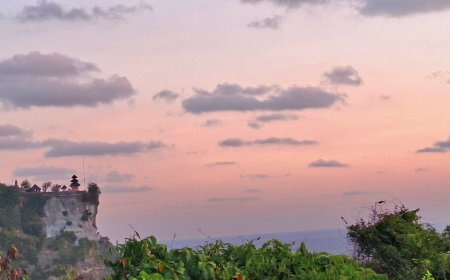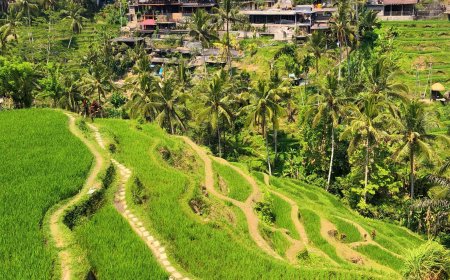Exploring the Underground House on Lembongan Island
Gala-Gala cave is an underground house constructed by Mangku Byasa in 1961. This underground house was built over a span of 15 years. It was created using rudimentary tools, without the assistance of modern equipment. Gala-Gala cave was originally intended as a meditation space. The construction of Gala-Gala cave was inspired by the Mahabharata epic.
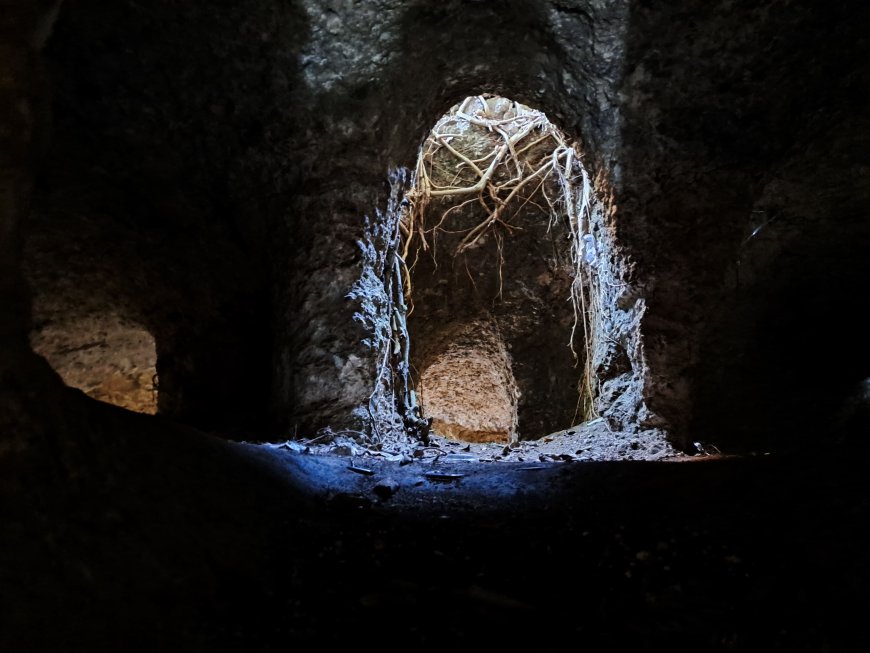
Gala-Gala cave is an underground house located on the island of Nusa Lembongan, Bali. This place is a unique and fascinating tourist destination to visit. It was built by a puppeteer named Mangku Byasa in 1961, taking 15 years to complete. The building is a spectacular achievement constructed with hard work, commitment, and heartfelt belief.
The existence of Gala-Gala cave is inspired by the Pandawa family's story in the Mahabharata epic. In the Mahabharata story, the Pandawa family had to take refuge in the forest and create a hideout in the form of an underground cave or house. Bhagawan Byasa, a sage from India who created the Mahabharata, has a name similar to Mangku Byasa, the builder of the underground house. This could be a coincidence, or there might be a deeper connection between the Mahabharata story and the construction of Gala-Gala cave.
The story recounts how the Pandavas saved themselves by hiding in the forest for 12 years after losing a bet to the Kauravas. During these 12 years, the Pandavas endured a challenging life in the forest and felt unsafe, fearing that the Kauravas would find and harm their family. To protect their family, the Pandavas decided to build a cave as their refuge.
In addition to Gala-Gala cave, there is another underground house built by Mangku Byasa near Dream Beach on Nusa Lembongan. However, this house is not well-maintained and is now called Rawan Kembang. This underground house was completed in 1962 and may be better preserved in the future as a cultural heritage.
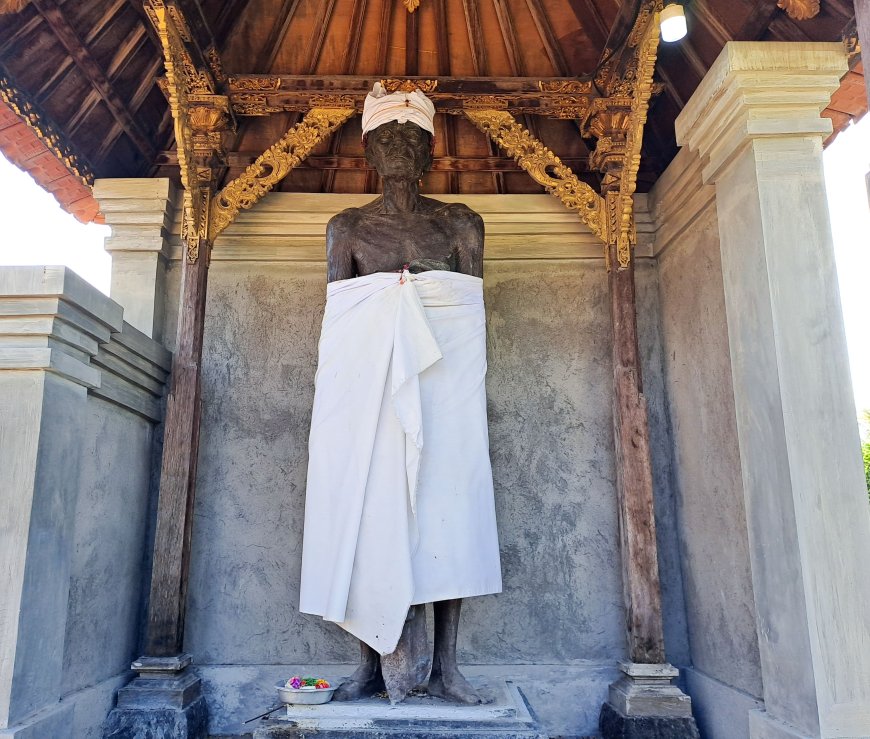
Mangku Byasa Statue (Photo Source: Private Collection)
The construction of Gala-Gala cave was a lengthy process that relied on conventional tools. Mangku Byasa had to work hard and display remarkable determination. Gala-Gala cave covers an area of about 500 square meters with 5 entrances and 3 ventilation points. The construction was carried out using simple tools such as crowbars. Because the soil on Nusa Lembongan contains hard-to-dig limestone, Mangku Byasa used a mixture of burned cow dung to soften the limestone.
Mangku Byasa was a puppeteer who also worked as a farmer and had a strong interest in the spiritual world. Gala-Gala cave was built as his meditation place. In addition to being a meditation spot, Gala-Gala cave features a bedroom, kitchen, living room, dining area, and various sculptures on the room walls.
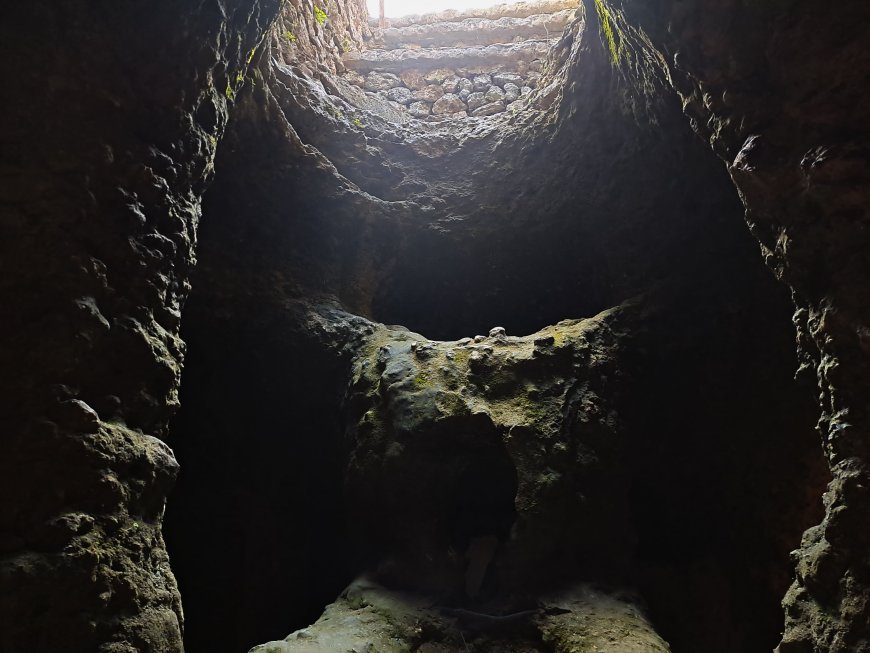
Gala-Gala Cave Entrance and Exit (Photo Source: Private Collection)
Gala-Gala cave has 5 main entrances and reaches a depth of 7 meters underground. The narrow corridors inside may require visitors to stoop at times. While there is lighting, it may not be optimal, and some areas can be quite dark.
Despite being underground, the air circulation is adequate, making it comfortable without feeling hot or stuffy when exploring the tunnels. This shows that the creator considered the comfort of this place as a dwelling. Gala-Gala cave is one of the unique cultural attractions on Nusa Lembongan Island, Bali.
If you want to visit this cave, access to Gala-Gala cave is relatively easy, as it is located only about 50 meters from the nearest road. The entrance fee is affordable, at just Rp. 20,000 for access to all areas. This allows you to enjoy the uniqueness of the cave without spending a lot. To reach Gala-Gala cave from Mushroom Bay Harbor, you need to travel approximately 1.5 km, while if you're coming from Jungut Batu, the distance is approximately 3.7 km.
Gala-Gala cave has 5 main entrances that are interconnected. Inside, there are many holes that can make visitors feel a bit apprehensive when navigating them alone. Additionally, some corners of the cave are inhabited by bats.
The sunlight filtering in through ventilation holes and entrances, which are approximately 1 to 2 meters high, adds to the natural atmosphere of the cave. Coupled with the majestic presence of a banyan tree, it creates a refreshing ambiance. It's not uncommon to break a sweat while exploring the cave's interior.
During your visit to Gala-Gala cave, you will experience something truly unique. There is a wealth of underground natural beauty that will captivate you throughout your journey in this cave. Despite the narrow and sometimes dimly lit passages, you will be mesmerized by the carvings on the walls. Each corner of the cave has its own charm. Gala-Gala cave is tangible evidence of the cultural richness and creativity that has existed for decades. Its uniqueness isn't just in its spectacular physical form but also in the strong spiritual aura that pervades the place.
Walking through Gala-Gala cave will make you feel like you're exploring an underground labyrinth, as if you're lost in a mysterious subterranean world. However, don't worry well-connected entrances will help you enjoy the beauty of this underground home.
The presence of bats in some parts of the cave adds to the natural ambiance of Gala-Gala cave. You may hear their rustling or even see them flying overhead. This experience is a rare encounter in other tourist destinations.
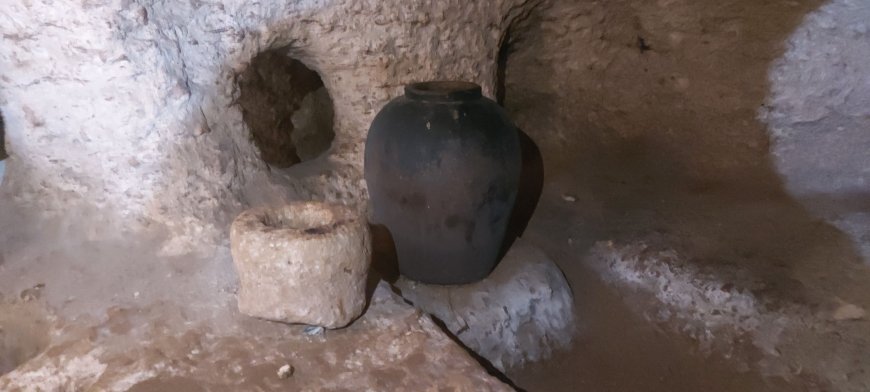
Gala-Gala Cave Kitchen Section (Photo Source: Private Collection)
Aside from being a meditation spot and a tourist attraction, Gala-Gala cave also holds significant historical value. It stands as a testament to human determination in creating something extraordinary with limited resources. The beauty and uniqueness of this cave deserve appreciation and preservation so that future generations can enjoy it.
As a tourist, it's important to maintain the cleanliness and preservation of this place. Do not leave litter inside the cave and adhere to all the rules. This is how we can preserve this valuable cultural and natural heritage for future enjoyment by many.


















































